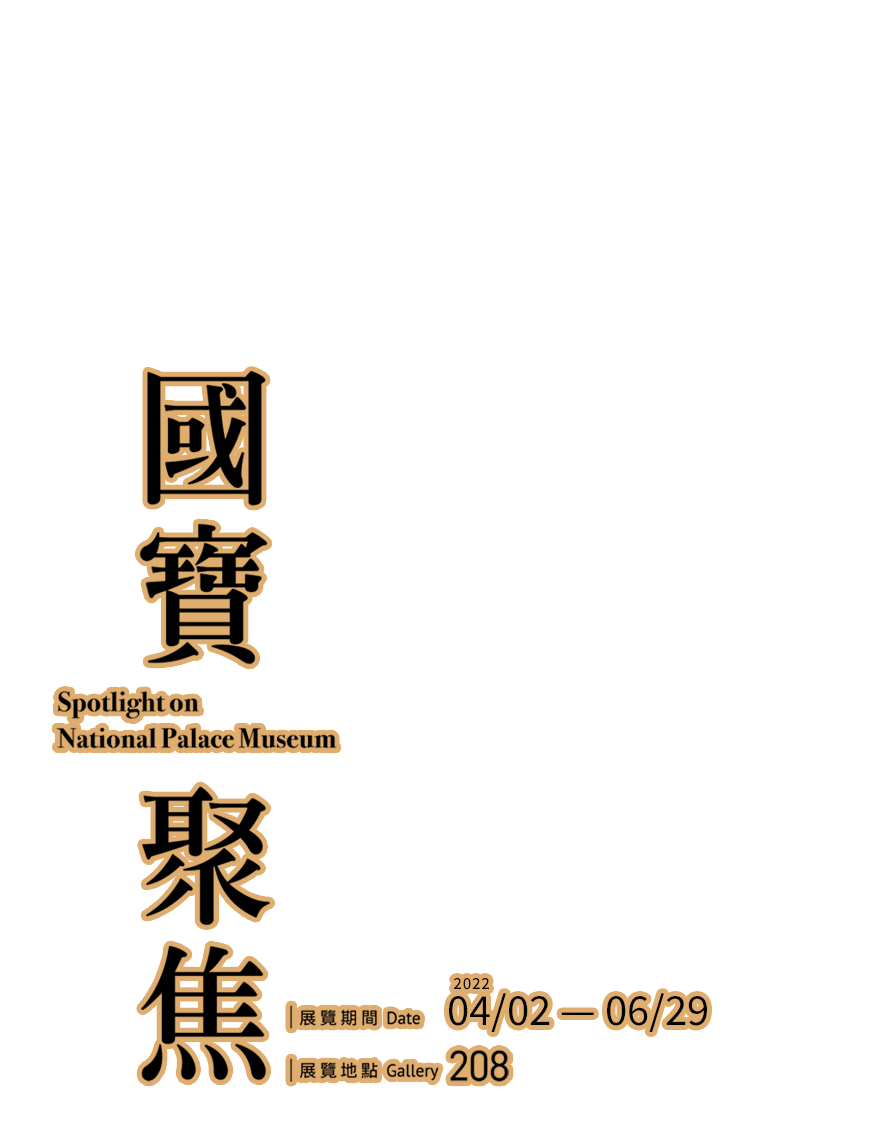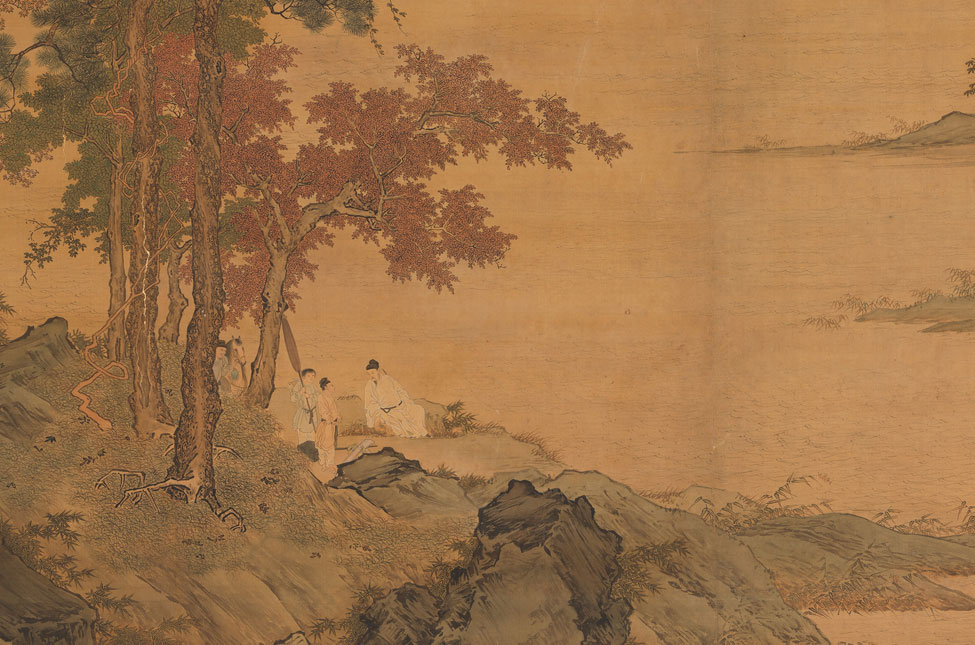Why is Qiu Ying’s “Waiting for the Ferry on an Autumn River” regarded as the National Treasure?
The “Waiting for the Ferry on an Autumn River” depicts an autumn scenery of travellers waiting for the ferry by the riverbank, a painting done by the great artist, Qiu Ying, who was active five hundred years ago. This exquisite artwork is the only extant piece of his panoramic landscapes.
The Innovative Panoramic Landscapes - “Infinite River” + “Distant Mountain”
The “landscapes paintings” generally embrace the mountain view as their focal expression, instead, the “Waiting for the Ferry on an Autumn River” centres around the water scenery in lieu. The everlasting winding river plays as the main rhythm in the composition of Qiu Ying’s “Waiting for the Ferry on an Autumn River”, leading audiences to travel through stunning sceneries, even more, connecting several hillsides along the riverbank to present a vast and boundless visual. At the distant end of the painting stands the towering feature mountain that reinforces the extensiveness and significance of the landscapes. The panorama composition has an enormous mountain dominating the visual and emphasizes all-inclusive subjects, which was a classic expression of the Northern Song dynasty. By the Ming dynasty, this type of composition was rare and only appeared in imitations of the Imperial painters in the hope to demonstrate the imposing Royal grandeur. However, “Waiting for the Ferry on an Autumn River” employs the open river and the grand mountain located afar, creating a majestic manner similar to the oversize landscapes from the Northern Song dynasty. Qiu Ying, who once imitated numerous Song and Yuan paintings, was exceptionally talented at adding creativity to the existing traditional styles. The “Waiting for the Ferry on an Autumn River” was the innovative practice of panoramic landscapes originated by Qiu Ying, which delivered a delightful new sensation to the audiences.
The varied sizes of objects on the hillside change with the distance accordingly, presenting a logical visual effect. The reeds all growing from the waterside gives the example of how Qiu Ying’s painting expressions differentiated by views from near to far.
Mountain with a Body as Lustrous as Jade
The use of “axe-cut” strokes and moist washing on the mountain stone brings an association with the “Pure Distance of Mountains and Streams” by Xia Gui from the Southern Song dynasty, in which the mountain presents distinct edges and a translucent quality. Qiu Ying tinted the surface in a pure and elegant light green that endues the mountain with quality as lustrous as jade. The random woods in red and green adorn the ridges of mountains and riverbanks, not only accentuating the texture of the mountain but also placing additional vibrancy
Vividly Portrayed Characters
Characters in the painting are all addressing theatrical expressions. The white-gowned literati sitting on the rock in the foreground has a delightful facial expression but seems occupied by thoughts; the passengers across the shore are having conversations and waiting for the departure, the frowned elder figure talks while the other one listens with full attention. A young man with a shoulder pole is pacing towards the ferry, and his joyful smile might result from catching the ferry just in time; even the back of the boatman is capturing the moment that he's urging the young man to get on. Whether leading figures or supporting roles, Qiu Ying granted these characters distinct facial features, expressions, styles, and gestures, which allowed the figures await to cross the river demonstrating rich and diverse emotions.
The “Waiting for the Ferry on an Autumn River” reflects the comprehension and interpretation of Qiu Ying on the landscapes paintings from the Northern and Southern Song dynasties, and exhibits the exquisite painting techniques on all aspects; including figure portraits, mountain and stone, and composition, hence it should be a masterpiece of Qiu from his prime time that embedded with ambition. This artwork was officially stated as the National Treasure by the Ministry of Culture on the 5th of May, 2015.
Who is Qiu Ying?
Qiu Ying (ca. 1494-1552), with the style name Shifu and sobriquet Shizhou, was active in the early 16th century and stood as one of the “Four Masters of Ming”. Qiu’s painting achievement overcame the boundary of social hierarchy, and he became an extraordinary professional painter in Suzhou that was the only one who did not belong to the literati class among the “Four Masters”. Qiu Ying’s life was unclear, based on scraps of records that stated he was initially a paint worker that later gained artistic training. The existing paintings and documents show that Qiu was capable of drawing varied themes of the figure, architecture, landscape, and flower and bird; proficient in various techniques of outlining and colouring, Qiu is regarded as an “omnipotent” painter. His artworks are exquisite yet elegant and celebrated by most generals. Hence, countless professionals study Qiu’s paintings, which even becomes a style frequently adopted by old-painting forgers.
Who had collected the “Waiting for the Ferry on an Autumn River”?
Chinese painting and calligraphy artworks have the tradition of having “seal impression” and “inscription”, which contributed the direct traces of artist or the circulation among connoisseurs.
The “Waiting for the Ferry on an Autumn River” does not bear Qiu Ying’s written signature, instead, it’s stamped with three seal impressions of Qiu. However, all the other seal marks were contributed by connoisseurs over time. The earliest connoisseurship impressions belong to Xiang Yuanbian (1525-1590), the renowned connoisseur from the Ming dynasty, and he had placed six seal marks in total. Documents had shown that Qiu Ying was commissioned by Xiang Yuanbian to copy old-master paintings for his private collection, and the fact theorizes that the “Waiting for the Ferry on an Autumn River” was possibly a commission from Xiang to Qiu.
Exhibit List
| Title | Artist | Period |
|---|---|---|
| Waiting for the Ferry on an Autumn River | Qiu Ying (ca. 1494-1552) | Ming dynasty |










